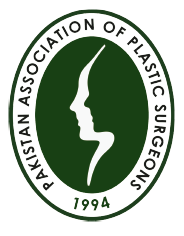NON SURGICAL
Non-surgical methods of brow lift are temporary, require less experience, and
in case of any complication, can be corrected easily
Botulinum toxin A (BTA) injection
The brow depressors are the orbital orbicularis oculi (lateral and mid-brow),
procerus (medial brow), corrugators (medial brow), and depressor supercilli
(medial brow). BTA may be used for eyebrow lifting by targeting both glabellar
and crow's feet areas. It mostly results in lateral eyebrow lift.
Soft tissue fillers
Fillers can enhance eyebrow contour and volume, and may be used for
improving the elevation of the eyebrow tail in case BTA fails to provide desired
eyebrow lifting
SURGICAL
Surgical methods, on the other hand, include some with temporary effect
(suture lift and trans-blepharoplasty approaches) and some with comparatively
permanent effect (direct and trans-forehead approaches).
Trans-blepharoplasty approach
Temporal brow ptosis is a common aging change that can contribute to upper
eyelid fullness. Stabilizing or lifting the outer brow has become an essential
adjunct to aesthetic upper blepharoplasty. A browpexy, or brow suture
suspension, is not a formal lift. This technique provides a minimally invasive
way to provide stabilization and possibly subtle elevation of the lateral brow.
Direct Brow Lift
The direct approach is most commonly used in patients with brow ptosis
secondary to injury of the temporal branch of the seventh nerve. While cosmetic
direct lift is mostly performed for men with recessed hairline who are thus not a
good candidate for forehead-brow lift it can be performed with good results in
selected female patients who require only eyebrow tail elevation alone , Direct
brow lift involves bilateral elliptical incisions just above the brows. The
inferior border of the incision is marked along the superior line of the eyebrow.
Suture lift
Sutures have been used to elevate lax skin of the neck and face, including the
brow. With the advent of polypropylene barbed sutures, the capacity of sutures
to withstand loads increased substantially.
Coronal forehead and eyebrow lift
The open coronal brow lift was the benchmark for eyebrow–forehead
rejuvenation for several decades. It is highly effective in elevating and
contouring the brows and removing the forehead–glabella rhytids . It is however
contraindicated in patients with high frontal hairline. The incision is usually
made posterior to the hairline and extends between the temporal fossae
Endoscopic forehead lift
For most patients, an endoscopic brow lift is preferable to an open coronal brow
lift because it is associated with reduced scarring and patient morbidity in
women and men.
Trichophytic forehead and brow lift
In patients with a high hairline, forehead reduction as well as brow elevation
may be achievable via putting the incision at or 1-2 mm posterior to the hairline
and excising the excess bare forehead later on in the procedure. To preserve the
follicles at the edge of the wound (so that adequate hair is available for scar
camouflage) the incision should be beveled in a posterior to anterior direction
with minimal cauterization.
Mid-forehead brow lift
The mid-forehead brow lift is similar to the direct brow lift, except the incision
is made in a deep transverse forehead crease rather than immediately above the
eyebrow. This technique lowers the hairline by shortening the forehead.
Written by : Dr. Fazlur Rahman
Copyrights: Pakistan association of Plastic Surgeons

